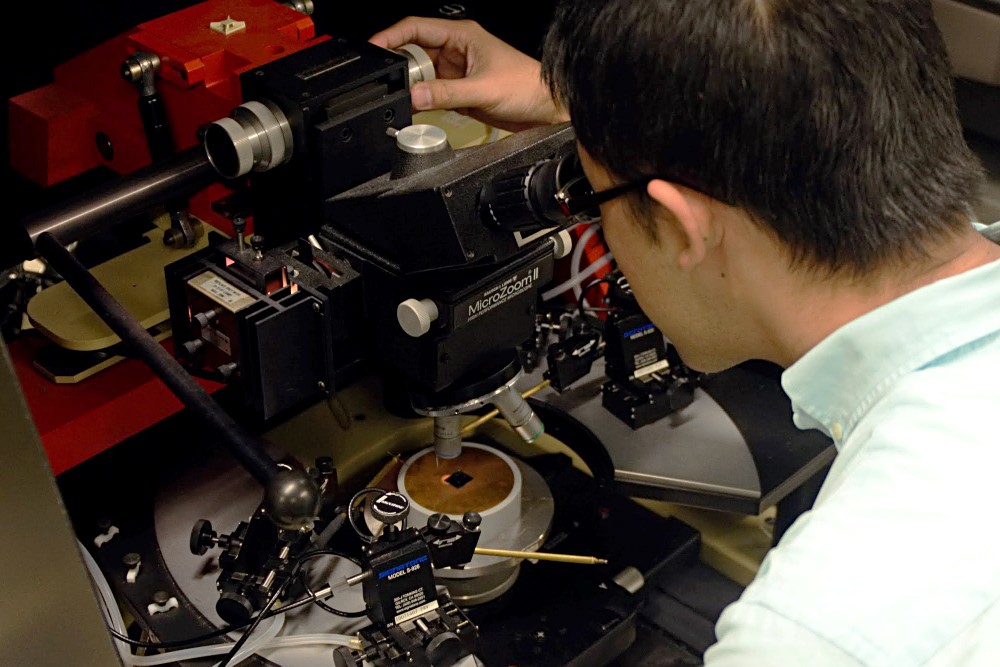University of Minnesota researchers have developed graphene-edged tweezers capable of trapping nanometer-sized particles as well as DNA molecules.
The tweezers — which are low-voltage and can trap particles faster than existing tweezers — are the first of their kind. Researchers hope to add a sensing function in the future that would make the tweezers especially helpful in biologic solutions.
Graphene — an atomically sharp material — is a single sheet of carbon atoms, said Tony Low, an assistant professor at the University.

To illustrate how thin the material is, University professor Steven Koester said that if graphite, the material that makes up pencil lead, is like a ream of paper, graphene is like a single sheet of paper.
Scientists wanted to maximize the dielectric force of the tweezers to pick up particles with more accuracy, Low said, and used graphene because it’s sharper than gold or silver, which are currently used in dielectrophoretic tweezers.
Graphene’s sharpness allows researchers to pick up individual molecules with unprecedented power and precision, said University professor Sang-Hyun Oh in an email.
Researchers want to investigate what happens to individual molecules as they are picked up by graphene, he said.
Additionally, researchers are able to “tune” graphene by manipulating the number of atoms per electron, which allows researchers to control the strength of graphene’s force.
The University’s tweezers trap particles much faster than existing technology.
“Instead of waiting for an hour or longer until the molecules are captured within the ‘sensing’ zone, graphene tweezers can actively trap and concentrate [particles] and speed up the sensing process to less than a minute,” Oh said in an email.

Plus, the University’s tweezers operate at a much lower voltage than competing technology. Graphene tweezers can operate at under 1 volt, while other electronic tweezers operate at over 5 volts, meaning they can be used in handheld devices and run off battery power, Oh said in an email.
Graphene is very sensitive to particles that land on its surface since it’s a single sheet of atoms. This makes graphene useful in sensing devices, which tell scientists how many particles are trapped by the tweezers, Koester said.
While researchers didn’t demonstrate the sensing function of the graphene tweezers, they hope to integrate this function in the future, he said.
This could make the tweezers especially useful in complex biological solutions, Koester said.
“That’s where the technique could be very powerful because it has the capability to not only select particles, but it can also reject certain particles, so it can allow us to pull towards the surface the ones we want,” he said.








